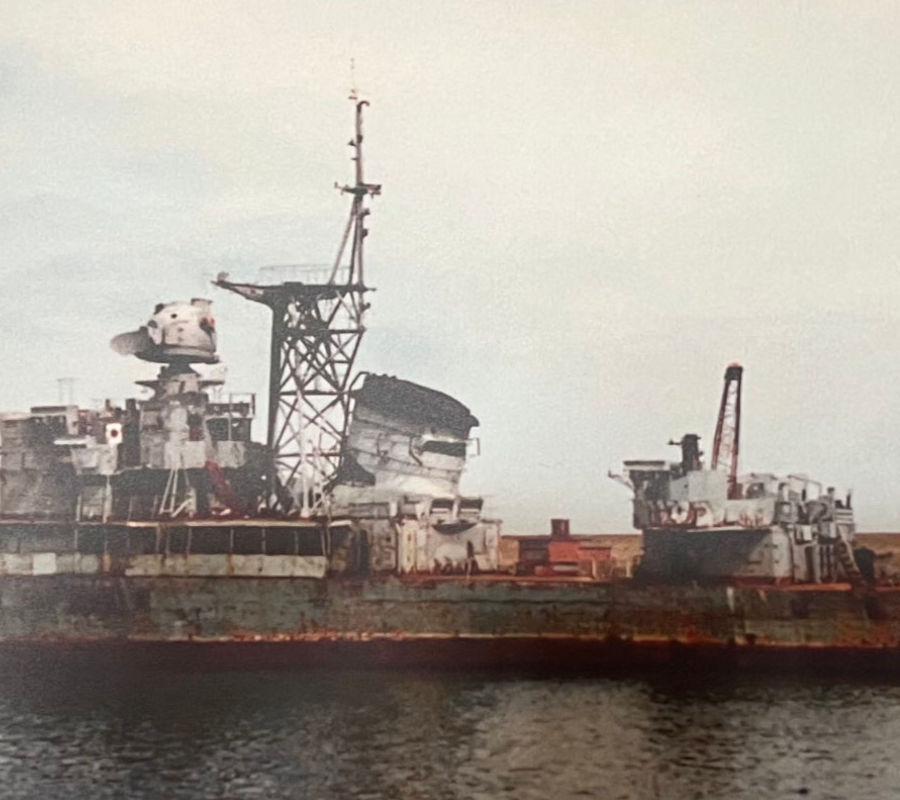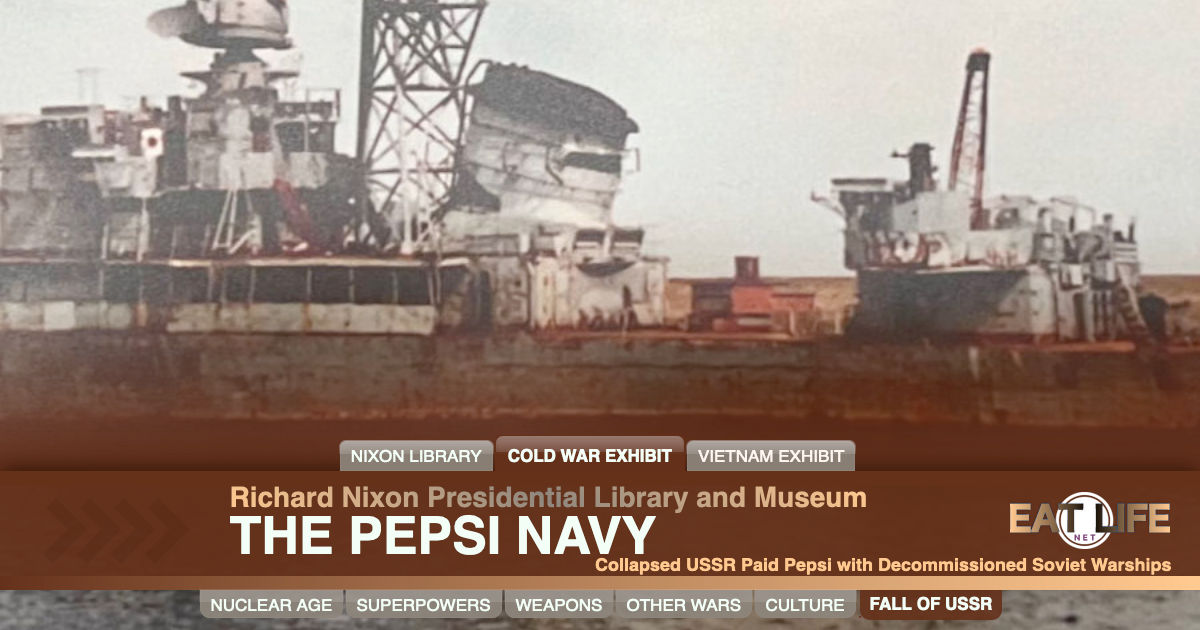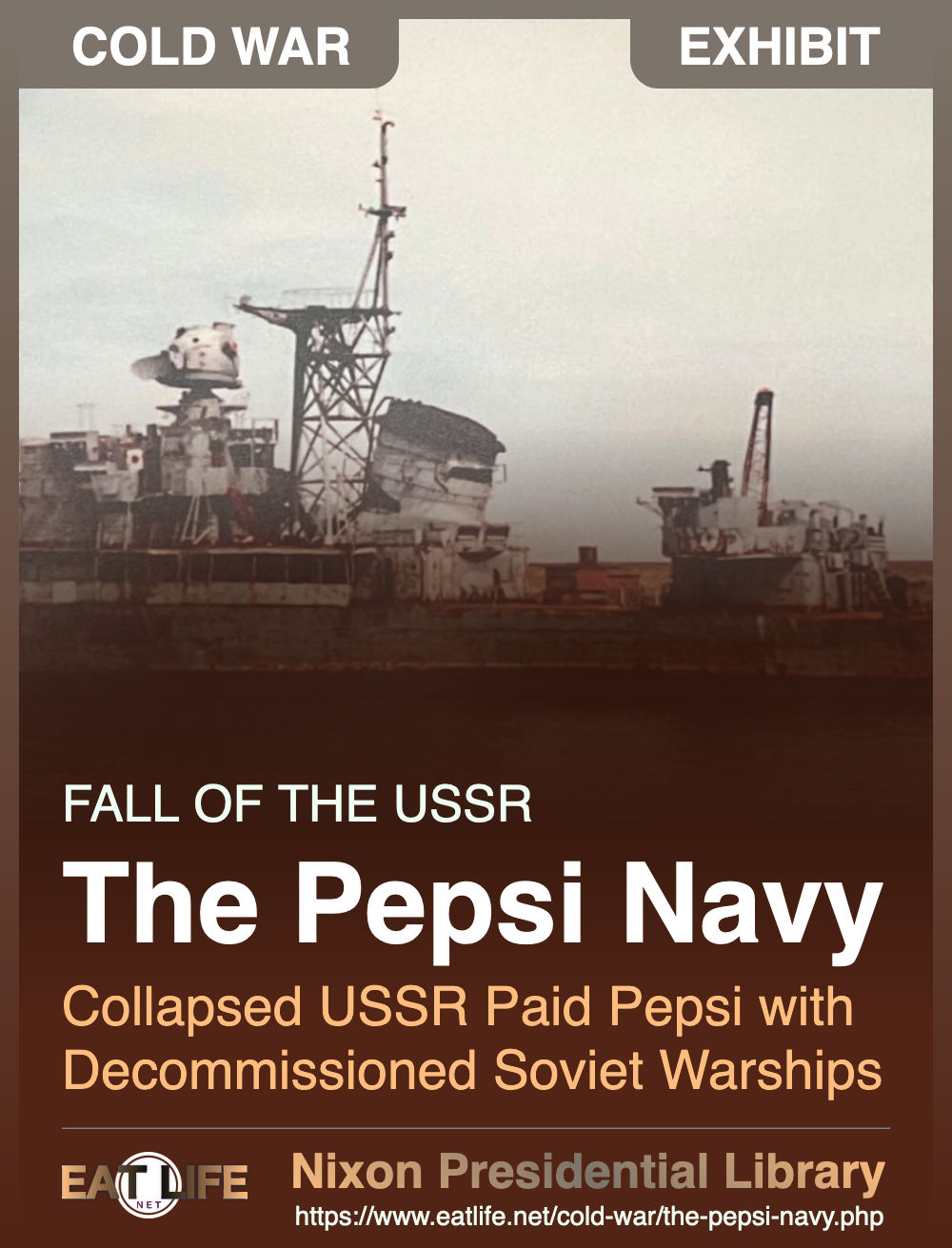In 1972, Pepsi became what the New York Times called "the first capitalistic product" available in the Soviet Union.
Don Kendall, CEO of PepsiCo, had negotiated a deal where it would provide the U.S.S.R. with Pepsi to sell in the Soviet Union and the Soviets would provide Pepsi with Stolichnaya vodka to sell in the United States.
Over the next two decades, Pepsi became enormously popular. By the late 1980s, more than a billion servings of Pepsi were being enjoyed every year by Soviet citizens. But when Americans started to boycott Russian products when the Soviets invaded Afghanistan in 1979, Pepsi sought another means of payment from the Soviets.
It took a decade to reach a deal, but in 1989, the Soviet Union gave Pepsi 17 submarines, a frigate, a cruiser, and a destroyer from their navy as payment for Pepsi. At the time, it was said that the deal made PepsiCo the owner of the sixth largest navy in the world.
The ships, old and outmoded, were quickly sold for scrap. So, Pepsi's warships were never used for the purposes for which they were built — not even in the long running "Cola Wars" between Pepsi and Coca-Cola.
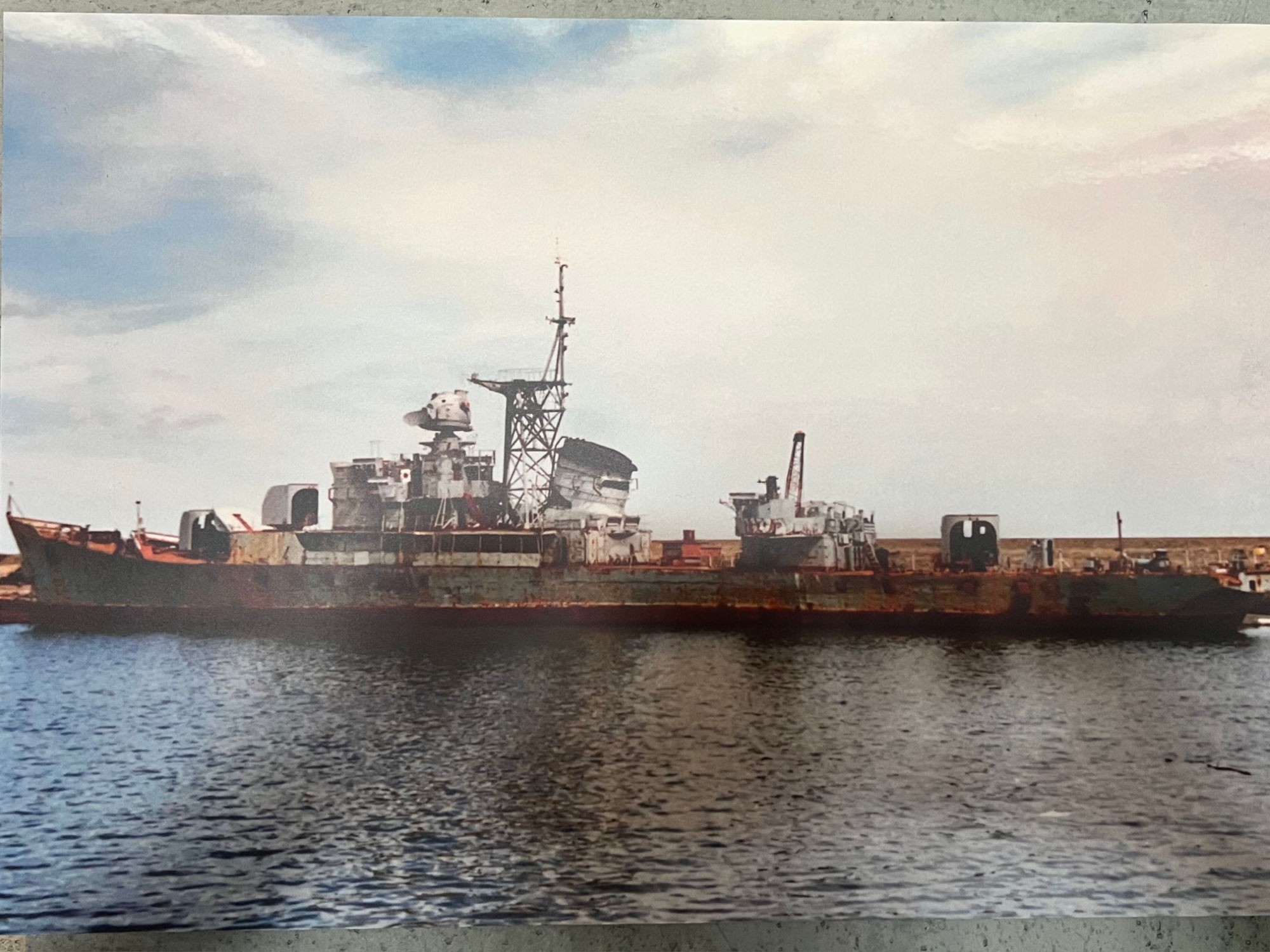
- Beyond repair, Pepsi delivered the Soviet naval vessels to a Norwegian scrap yard to be dismantled and sold for parts.
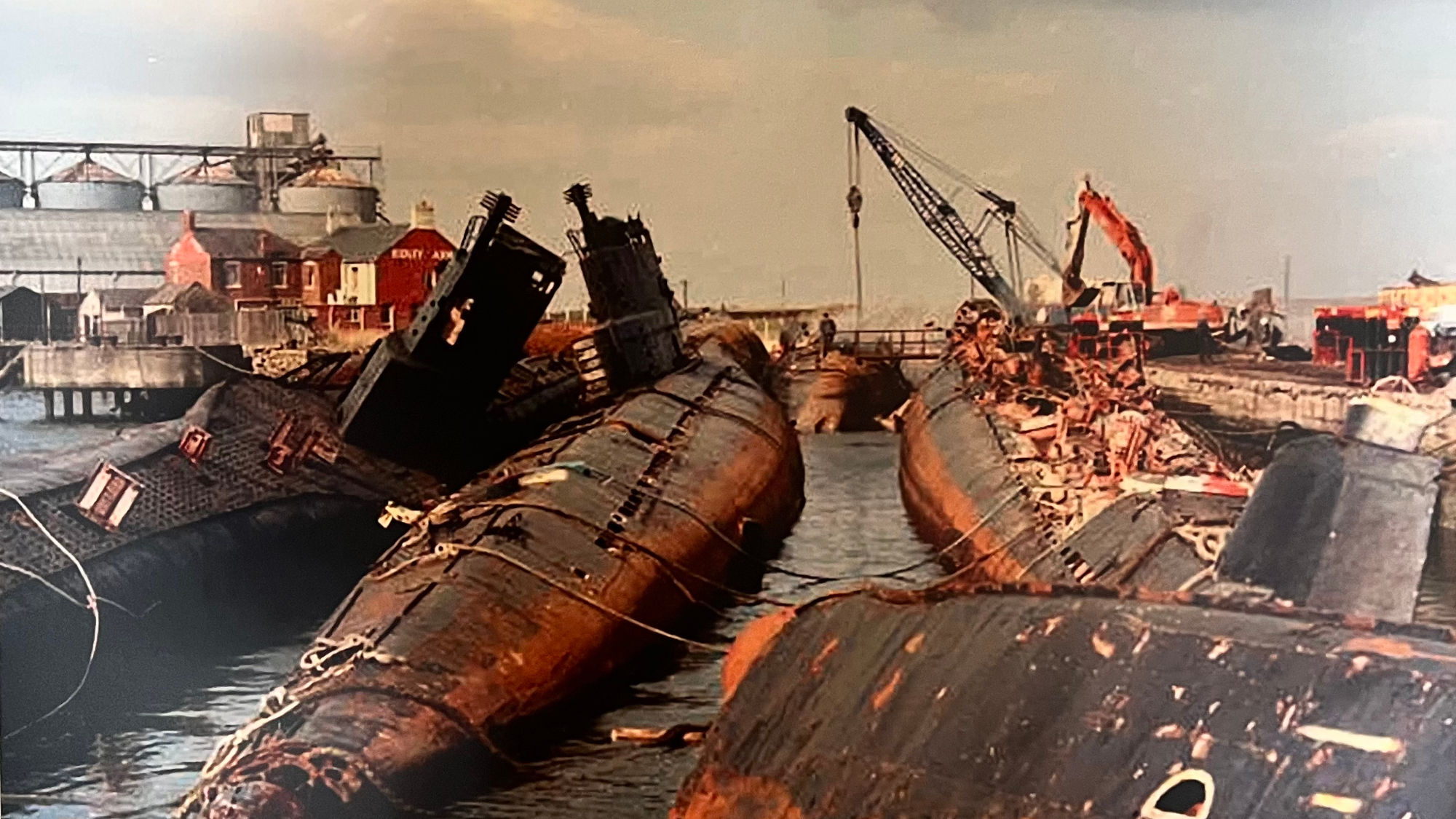
Atlas ObscuraPepsi had a long, strange relationship with the U.S.S.R.
On April 9, 1990, American newspapers reported on an unusual deal. Pepsi had come to a three billion dollar agreement with the Soviet Union. The Soviet Union had long traded Stolichnaya vodka in return for Pepsi concentrate. But this time, Pepsi got 10 Soviet ships.This wasn't the first time that Pepsi sold soft drinks in return for a flotilla. The previous year, the company even received warships. This situation - a soft drink conglomerate briefly owning a fairly large navy - was the unusual result of an unusual situation: a communist government buying a product of capitalism from the country it considered its greatest rival.
The U.S.S.R. was Pepsi's CEO Kendall's land of opportunity, and his goal was to open it to Pepsi. In 1972, he succeeded, negotiating a cola monopoly and locking out Coca-Cola until 1985. Cola syrup began flowing through the Soviet Union, where it was bottled locally. It was a coup: As the New York Times put it, the soda was “the first capitalistic product” available in the U.S.S.R. Pepsi had become a pioneer. But there was one issue: money.
Soviet rubles were worthless internationally, with their value determined by the Kremlin. Soviet law also prohibited taking the currency abroad. So the U.S.S.R. and Pepsi resorted to barter. In return for cola, Pepsi received Stolichnaya vodka to distribute in the United States. By the late 1980s, Russians were drinking approximately a billion servings of Pepsi a year. In 1988, Pepsi broadcast the first paid commercials on local TV, starring none other than Michael Jackson. The bartering worked well-Stolichnaya was popular in the United States. An American boycott in response to the Soviet-Afghan war, however, meant that Pepsi wanted something else to trade.
So, in the spring of 1989, Pepsi and the Soviet Union signed a remarkable deal. Pepsi became the middleman for 17 old submarines and three warships, including a frigate, a cruiser, and a destroyer, which the company sold for scrap. Pepsi also bought new Soviet oil tankers and leased them out or sold them in partnership with a Norwegian company. In return, the company could more than double the number of Pepsi plants in the Soviet Union. (It also ignited jokes that Pepsi was taking the Cola Wars to the high seas.) “We're disarming the Soviet Union faster than you are,” Kendall quipped to Brent Scowcroft, President George H.W. Bush's national security adviser.
But that was nothing compared to 1990's three billion dollar deal. (A figure based on Pepsi's estimate of how much sales of cola in the Soviet Union and vodka in America would net them over the next decade.) It was the largest deal ever brokered between an American company and the Soviet Union, and Pepsi hoped it would spur more expansion. Pepsi even launched another American institution in the country: Pizza Hut. The future looked bright.
Instead, the Soviet Union fell in 1991, taking with it Pepsi's deal of the century. Suddenly, their long balancing act turned into a scramble to protect its assets in a free-for-all made more complex by redrawn borders, inflation, and privatization.
WIKIPEDIASoviet Union
In 1959, the USSR held an exhibition of Soviet technology and culture in New York. The United States reciprocated with an exhibition in Sokolniki Park, Moscow, which led to the famous kitchen debate. One of the American products exhibited was Pepsi Cola. After obtaining a photo of U.S. President Richard Nixon and Soviet Premier Nikita Khrushchev sipping Pepsi, PepsiCo executive Donald Kendall was able to capture the attention of the Soviet people and, in 1972, negotiate a cola monopoly in the USSR. Due to Soviet restrictions on transporting roubles abroad, PepsiCo struck a barter deal whereby Stolichnaya vodka would be exchanged for Pepsi syrup.This deal lasted until 1990, when the USSR and PepsiCo renegotiated a US$3 billion deal to exchange syrup for vodka and a small fleet of decommissioned Soviet warships including 17 submarines, a frigate, a cruiser and a destroyer. This deal fell through before it could take place due to the fall of the Soviet Union and was renegotiated with the former nations of the USSR. The new trade deal included receiving cheese from Russia to supply its Pizza Hut locations and receiving double-hulled tankers from Ukraine. The deal also originated an erroneous factoid which claims that, after acquiring the Soviet fleet, PepsiCo briefly possessed one of the most powerful navies in the world. This is false because not only did the deal ultimately not take place but it would have only granted PepsiCo "small, old, obsolete, unseaworthy vessels".
